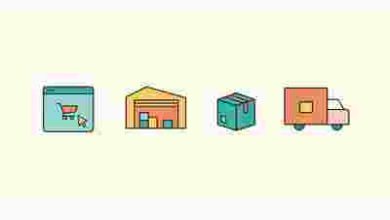Using Data Visualization to Tell a Story

Using Data Visualization to Tell a Story
Why Data Visualization Matters
In today’s data-driven world, the ability to effectively communicate and make sense of vast amounts of information is crucial. Data visualization offers a powerful tool to transform complex data sets into compelling and easy-to-understand visuals. By presenting data visually, we can convey information, uncover patterns, and reveal insights that might otherwise go unnoticed.
The Power of Visual Storytelling
Visual storytelling is a powerful means to captivate audiences and convey information in a memorable way. When data is presented in a visually appealing and engaging manner, it becomes more accessible and engaging to a wider range of people. Data visualization allows us to tell a story by leveraging charts, graphs, maps, and interactive elements that paint a clear picture of the underlying data.
The Benefits of Using Data Visualization to Tell a Story
1. Enhanced Understanding: By visualizing data, we can distill complex information into easily digestible visuals, making it easier for audiences to grasp key insights and trends.
2. Improved Decision-Making: When data is presented visually, decision-makers can quickly identify patterns, correlations, and outliers, enabling them to make more informed decisions.
3. Engaging Presentations: Visual storytelling holds the attention of your audience, making your presentations more engaging and memorable.
4. Inspire Action: Well-crafted data visualizations can inspire action by presenting information in a way that draws attention to specific areas, promotes understanding, and drives desired outcomes.
Frequently Asked Questions (FAQs)
Q: Can data visualization be used for any type of data?
Yes, data visualization can be used for almost any type of data. Whether it’s quantitative or qualitative data, structured or unstructured, data visualization techniques can be applied to present it visually.
Q: What are some popular tools for creating data visualizations?
There are several popular tools available for creating data visualizations, such as Tableau, Microsoft Power BI, Google Data Studio, and D3.js. These tools offer a range of features and capabilities to transform raw data into visually compelling stories.
Q: How can I ensure that my data visualizations are effective?
To ensure the effectiveness of your data visualizations, consider the following tips:
– Know your audience and tailor your visualizations to their needs and preferences.
– Keep it simple and avoid cluttering your visuals with unnecessary details.
– Use appropriate chart types and visual elements that best represent your data.
– Provide meaningful context and annotations to help your audience interpret the data accurately.
Q: Can data visualization uncover hidden patterns or insights?
Yes, data visualization can help uncover hidden patterns and insights that might be difficult to identify in raw data. By exploring data visually, you can discover correlations, trends, and anomalies, thus revealing valuable insights that can inform decision-making and drive innovation.
Conclusion
Data visualization has the power to transform complex data into compelling stories. By utilizing engaging visuals and powerful storytelling techniques, we can communicate data in a way that resonates with our audience, enhances understanding, and drives action. So, embrace the power of data visualization and unlock the potential of your data by telling captivating stories through visuals.



